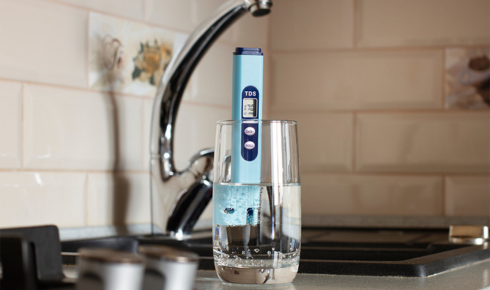If you’ve ever glanced at your water test report or casually Googled “why does my tap water taste off,” you’ve probably come across the term TDS. Total Dissolved Solids, or TDS, is a measure of all the dissolved minerals, salts, and metals present in water. It’s one of those metrics that sounds technical but has a very real impact on daily life—from taste and odor to appliance longevity and even health considerations.
When I first looked at my home’s water report, I had no clue what to make of the TDS reading. It wasn’t alarming at first, but there was that faint metallic tang in my coffee, and my water heater seemed to accumulate scale faster than expected. That’s when I started learning about tds reduction filters and realized there’s a practical way to manage TDS levels for better-tasting, safer water.
Why TDS Matters
TDS itself isn’t inherently dangerous. After all, some dissolved solids are beneficial—think calcium and magnesium, which contribute to hardness but also support our daily mineral intake. The problem arises when TDS levels are either too high or too low. High TDS can make water taste bitter or metallic, contribute to scale buildup in pipes and appliances, and occasionally indicate the presence of unwanted contaminants. Low TDS, on the other hand, can make water taste flat and may lack certain minerals that provide subtle health benefits.
For homeowners, understanding TDS is less about fear and more about balance. It’s about ensuring your water tastes good, is safe for daily use, and doesn’t wreak havoc on plumbing or appliances over time.
How TDS Enters Your Water
TDS in water comes from a combination of natural and man-made sources. Groundwater passes through rocks and soil, picking up minerals along the way, which is perfectly normal. However, municipal water treatment processes can add chlorine, fluoride, and other chemicals, contributing to total dissolved solids. Even home plumbing—older pipes, solder joints, or water softeners—can subtly affect TDS levels.
Interestingly, seasonal changes can also impact TDS. Heavy rains can dilute groundwater, temporarily lowering TDS, while dry spells concentrate minerals and salts. For anyone living in regions with fluctuating water tables or varying water sources, it’s worth monitoring TDS levels periodically to understand trends rather than reacting to one-off readings.
Reducing TDS: The Basics
If your TDS levels are higher than ideal, one practical approach is the use of tds reduction filters. These filters, often integrated into reverse osmosis or specialized multi-stage filtration systems, remove excess dissolved minerals, heavy metals, and salts to create cleaner, more balanced water.
I installed a small under-sink RO system for my kitchen after noticing a high TDS reading. Within days, the water tasted noticeably smoother, coffee brewed better, and ice cubes were crystal clear. It’s amazing how much a small adjustment can improve everyday life without complicated interventions or excessive maintenance.
How to Control TDS in Water
Some people wonder, beyond filtration, how to control tds in water without completely stripping it of minerals. The key is selective management. Not all TDS is harmful—some minerals are essential and contribute positively to taste and health. Systems like water softeners, partial RO setups, and remineralization units allow homeowners to target specific unwanted solids while keeping beneficial minerals intact.
Personally, I found that adjusting my home system to include a remineralization stage made a huge difference. The water no longer had that flat, “over-filtered” taste, but it still removed problematic metals and salts. This balance is crucial because overly aggressive filtration can sometimes lead to water that tastes unnatural or lacks essential minerals.
Practical Tips for Homeowners
Managing TDS isn’t just about installing a filter—it’s about understanding your water, regular maintenance, and monitoring. Here are some steps that worked for me:
- Test Regularly: Invest in a TDS meter. Checking levels monthly or quarterly helps you spot trends before they become problems.
- Select Appropriate Filters: Not every system is designed to remove the same solids. Check specifications to ensure it targets the minerals you want to remove.
- Balance Mineral Content: If TDS drops too low, consider a remineralization cartridge or natural sources like mineral stones in your storage tank.
- Maintain Your System: Replace filters on schedule and sanitize storage tanks or membranes as recommended. Neglecting maintenance can lead to bacterial growth and reduced effectiveness.
Following these simple steps helped me maintain consistent water quality without overcomplicating my daily routine.
How to Decrease TDS of Water Effectively
For those dealing with persistently high TDS, the question arises: how to decrease tds of water efficiently? There are several proven methods:
- Reverse Osmosis (RO) Systems: These push water through semi-permeable membranes, removing the vast majority of dissolved solids.
- Distillation: Boiling water and condensing the steam separates most solids, although it’s energy-intensive and less practical for large-scale daily use.
- Deionization: Often used in laboratories, this method swaps ions in water to remove dissolved solids, but it’s expensive for residential use.
In my experience, RO systems strike the best balance for home use. They’re effective, relatively low-maintenance, and don’t drastically alter the essential mineral profile of your water if paired with remineralization options.
Benefits Beyond Taste
Lowering TDS isn’t only about flavor. Appliances like coffee makers, kettles, and dishwashers last longer when water has fewer dissolved minerals. Plumbing is less prone to scale buildup, which reduces maintenance costs and prolongs service life. For families, it also means safer water for cooking, hydration, and even pets.
I remember noticing how much less soap I needed for dishes and laundry after installing a TDS reduction system. Hard water often requires extra detergent to get the same cleaning power, so reducing TDS saved money and reduced chemical exposure in our household.
Lifestyle and Health Considerations
While high TDS water is generally safe to drink, some dissolved solids like heavy metals or excessive salts can pose health risks over time. For individuals with dietary restrictions, sensitive digestive systems, or young children, monitoring TDS can add an extra layer of assurance.
For me, the peace of mind was just as important as the improved taste. Drinking water that’s both pleasant and balanced feels like a small luxury, but it impacts everyday well-being in subtle ways—better hydration, better cooking results, and even a slightly improved sense of energy.
Local Water Insights
Water quality varies depending on your location. Municipal supplies, groundwater sources, and local infrastructure all influence TDS levels. In many areas, residents may experience higher TDS during dry seasons or in neighborhoods with older plumbing. Consulting local water experts and reviewing annual water quality reports can help homeowners tailor solutions to specific conditions.
For instance, a friend in a neighboring city had unusually high TDS due to older distribution lines. Installing a customized RO system with regular monitoring improved both taste and appliance longevity, demonstrating the value of location-specific interventions.
Final Thoughts
Managing TDS is less about panic and more about control, balance, and informed choices. Using tds reduction filters, knowing how to control tds in water, and understanding how to decrease tds of water are practical steps for ensuring water quality that’s both safe and enjoyable.

